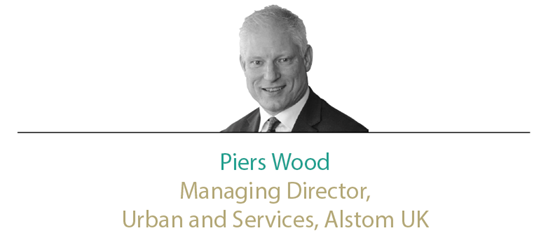
Light rail hasn’t always had a great press in the UK. From infamous overspends to innumerable feasibility studies that never made it off the drawing board, there are plenty of cautionary tales. But look at the facts, and the story of light rail in the UK is one of resurgence. With new technology and favourable political winds, we are entering a new age of light rail.
Travel to any city in Britain where a light rail system is up and running, and you find positive passenger experiences, good revenues for operators, and economic and environmental benefits.
Take Nottingham, which last summer marked the completion of its tram extension - two lines link the city centre to the suburb of Clifton in the south and the Queen’s Medical Centre in the east, carrying up to 23 million passengers a year. At Alstom we know Nottingham well. We led the consortium that designed and built the new infrastructure, and we are now responsible for the operation of all three of the city’s tram lines. The tram connects 80% of Nottingham’s workplaces and seven of its nine park and ride sites, and passengers are voting with their feet. Recent research found 98% satisfaction among the city’s tram passengers.
There is no doubt that light rail is a success in Nottingham. There is no reason why it can’t be successful in other parts of the UK. The conditions are right for more cities to adopt the technology.
Politically, the winds are behind light rail. Devolution in this country is putting power back into the hands of cities and regions. There is more local control over transport and economic priorities, and light rail is a proven solution for both. Housing is under intense pressure, especially the greenbelt. Light rail, designed in the right way, supports denser housing in city centres, moving large numbers of people from home to work so urban centres need not sprawl.
Light rail technology has made great strides. Interactions with existing infrastructure and utilities in cities have been cast as insurmountable problems, but Alstom’s experience in Nottingham is instructive. Our engineers found solutions to slash the impacts of noise and vibration at Nottingham University’s campus, for example. Indeed, from battery-powered trams in Birmingham to South Yorkshire’s tram-train pilot, technological boundaries are being pushed and the humble tram is once again at the cutting edge of transport design.
These are all positive signs, but big obstacles must be overcome if light rail is to realise its potential in Britain. A multitude of bodies must work in partnership to find the right solutions to the complexities of building rail infrastructure in urban environments. Councils, transport authorities, utilities and public bodies need to work together to solve problems in a creative and flexible way. We’ve seen this work in Nottingham - we know it can work elsewhere.
Power needs to be given to local regions to truly take control of their transport networks, and planning restrictions must be eased to create a fast, efficient route from the drawing board to the construction site. Achieve these things, and the prize is great.
Look at Reims, where the tramway carries 42,500 passengers a day. Here APS technology (ground power supply) allows us to preserve the look of the historic city centre with a 2km catenary-free section, while providing fluid operation, high availability and safety. There are no performance compromises against the overhead line on the rest of the 11km line.
Look at Dubai, where our trams offer a red carpet passenger experience, with live passenger information and entertainment systems, and air-conditioning to combat the stifling desert heat.
Or look to Rio de Janiero, where brand new Citadis trams will ferry passengers around the city during the 2016 Olympic Games.
Sales of the Citadis alone tell the story of the resurgence of light rail. Since the year 2000, more than 2,300 light rail vehicles have been sold to 54 cities all over the world. In the British Isles, Dublin has also taken up the technology.
In Europe, the Middle East and South America, light rail is a solution to economic growth and the sustainable development of cities. In the UK, for the first time in a long time, the conditions look right for us to take the driving seat in the new age of light rail.











